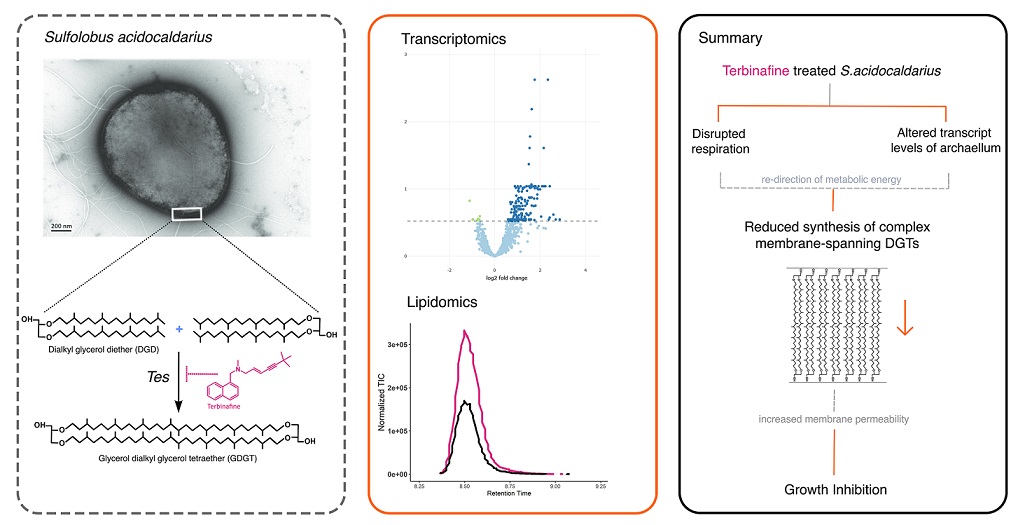Cellular membranes are essential for compartmentalization, maintenance of membrane permeability and fluidity in all three domains of life. Archaea belong to the third domain of life and have a distinct phospholipid composition. Membrane lipids of archaea are ether-linked molecules, specifically dialkyl glycerol diethers (DGDs) and glycerol dialkyl glycerol tetraethers (GDGTs). Terbinafine has been proposed as an inhibitor of GDGT biosynthesis in Archaea based on radiolabel incorporation studies. Here, we have studied the early cellular responses of the archaeon Sulfolobus acidocaldarius to terbinafine whose membrane is mostly composed of the membrane-spanning GDGTs. Depletion of GDGTs and an accompanying accumulation of DGDs upon treatment with terbinafine was growth phase and dose dependent. Additionally, a major shift in the saturation of caldariellaquinones was observed, resulting in the accumulation of unsaturated molecules. Transcriptomic data indicated that terbinafine primarily targets the respiratory complex along with genes involved in motility, fatty acid metabolism and GDGT cyclization. Combined, these findings suggest that respiratory stress is the preliminary response of S.acidocaldarius to terbinafine while targeting multiple proteins involved in isoprenoid biosynthesis and saturation.

